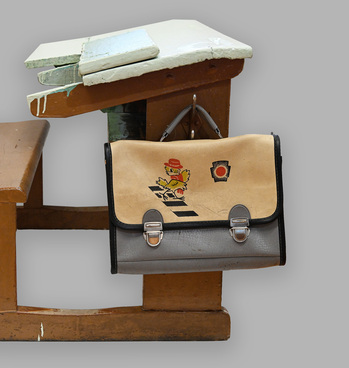The Polyarny Museum of History and Local Lore presents a tip of a toggling harpoon that was found in one of the northern burials. The harpoon was made from a large hoofed animal’s bone split along its length.
The Early Metal Ages are the time when the cultural and economic life of societies that specialized in hunting marine animals flourished. The hunting equipment included a huge variety of arrowheads, spears and harpoons of various types. Each kind of tip was intended for hunting certain animals. The people usually hunted for harp seals, seals, walruses and, less frequently, whales. Hunting marine animals provided an enormous amount of food and material. People slaughtered their prey with clubs and stones at rookeries — on ice in winter and on land in summer. They hunted on boats in coastal waters and used harpoons of different types, including toggling harpoons. People also used to ambush their prey near openings in the ice.
Toggling harpoons testify to the fact that 3500 years ago sea hunters’ societies were already highly advanced. The appearance of such specialized tools in the Early Metal Ages on the Kola Peninsula was the result of a long period of adaptation to coastal conditions.
Once the tip of the harpoon penetrated the body of the prey, it twisted under the animal’s skin making it difficult to get out and increased the size of the wound. Such harpoons were made of long deer bones, which were sawed lengthwise, cut and sharpened. A hole was drilled out for a long strap or line. The groove was cut in the inner part of the split bone. It is possible that the tips of such bone harpoons had metal or stone inserts. The harpoon was inserted into a sleeve attached to its shaft. Upon striking the animal, the harpoon popped out of its sleeve, lodging itself in the animal’s body. The shaft to which the line was also attached remained in the hunter’s hands. When hunting on a boat, the line prevented the prey from going deep into the water or getting away from the hunters’ boat. Toggling harpoons were used mainly on walruses and whales when hunting in ice; simple harpoons were used for other marine animals in clear water.
Harpoon tip
Время создания
the Early Metal Ages, circa 1200 B.C.
Место создания
Kola Peninsula
Размер
12,6x2,5x1 cm
Техника
bone, carving, sanding, drilling
1
Открыть в приложении #2
#4
Harpoon tip
#3
Ministry of Culture of the Russian Federation
читать дальшескрыть
00:00
00:00
1x
Harpoon tip
Время создания
the Early Metal Ages, circa 1200 B.C.
Место создания
Kola Peninsula
Размер
12,6x2,5x1 cm
Техника
bone, carving, sanding, drilling
1
Открыть в приложении
Поделиться





